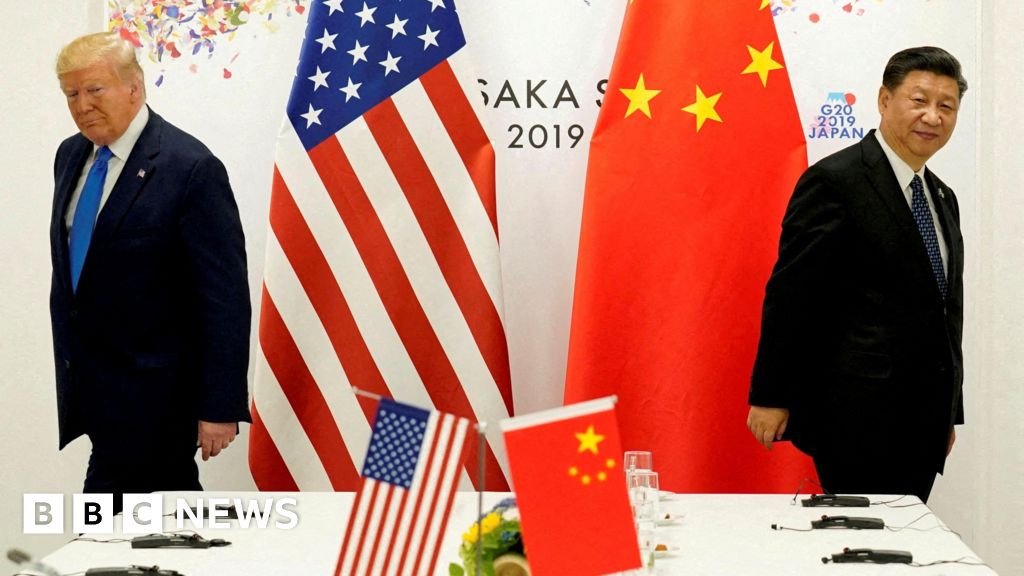Key Takeaways
- Wash trading distorts NFT markets, inflating prices and misleading buyers.
- Criminals use NFTs for money laundering, hiding funds through mixers and cross-chain transfers.
- Regulators and investigators track fraud, using blockchain forensics to detect suspicious activity.
- Stronger security and transparency are needed to reduce fraud and protect the NFT ecosystem.
Non-fungible tokens (NFTs) are among the most distinctive elements of crypto space. They excite the ecosystem and create opportunities for investors, artists, and individuals exploring the intersection of generative art, 1/1 digital art, artwork limited editions, and other blockchain-based digital assets.
However, despite the success of iconic projects like Bored Apes, CryptoPunks, Damien Hirst’s polka-dot NFTs, and smaller artistic ventures, the NFT market is not free from illegal or unethical activities.
Wash trading and money laundering remain serious concerns, distorting prices and enabling financial crimes. Markets face growing scrutiny over fraudulent practices that undermine trust in the crypto industry.
This article examines common NFT wash trading techniques, the impact of illicit activities on the ecosystem, and regulatory challenges.
What Is Wash Trading in NFTs?
Wash trading in NFTs is a deceptive practice where a trader buys and sells the same NFT to create false trading activity and inflate its price. This manipulation makes the asset appear more valuable and in demand than it actually is.
The goal is to mislead buyers into purchasing the NFT at an artificially high price. Wash trading is illegal in traditional financial markets, but regulatory oversight in the NFT space is still evolving. This practice can undermine trust in NFT marketplaces and distort the market’s true value.
How To Detect Wash Trading in the NFT Market?
Detecting wash trading in the NFT market starts with understanding the different types of NFTs, as all categories can be affected by fraudulent activity. Wash traders manipulate prices and trading volumes across various NFT sectors, creating misleading market trends.
Recognizing these tactics helps users and platforms maintain transparency and prevent artificial market distortions.
The NFT space includes various categories beyond generative and 1/1 digital art. Some categories may overlap—for example, gaming NFTs can also have utility—while others continue to evolve as new innovations emerge. This list highlights key categories but is not exhaustive, as the NFT landscape constantly changes.
- Generative art NFTs: Algorithmically created pieces with unique traits assigned at minting (e.g., Art Blocks, Fidenza).
- 1/1 digital art NFTs: Unique, manually crafted digital works by artists (e.g., Beeple’s Everydays, XCOPY’s glitch art).
- PFP NFTs: Profile picture collections featuring thousands of unique avatars, often used as digital identities (e.g., CryptoPunks, Bored Apes).
- Gaming NFTs: Blockchain-based in-game assets, characters, skins, or land, often providing additional in-game utility (e.g., Axie Infinity, Otherside).
- Music NFTs: Tokenized songs, albums, or sound-based works enabling direct artist-to-fan sales (e.g., Blau’s Royal, Sound.xyz).
- Photography NFTs: Tokenized photography collections or individual pieces (e.g., Justin Aversano’s Twin Flames).
- Virtual real estate NFTs: Digital land or properties in metaverse environments, sometimes integrated with gaming or social experiences (e.g., Decentraland, The Sandbox).
- Utility NFTs: Tokens providing benefits like event access, memberships, or governance rights (e.g., VeeFriends, Flyfish Club).
- AI-generated NFTs: Digital works created using artificial intelligence (AI), ranging from fully AI-generated pieces to AI-assisted artworks where human artists refine the final result.
- Historical NFTs: Some of the earliest NFT projects, valued for their significance in developing the space (e.g., Rare Pepes, CryptoKitties).
Wash trading can occur in any category through artificial price inflation, self-trading, or coordinated schemes.
The Mechanics of Wash Trading
Wash trading inflates NFT prices, misleading buyers about market value. Traders manipulate transactions to create artificial demand and distort price discovery. Common tactics include:
- Self-trading using multiple wallets: A single entity controls several wallets, repeatedly buying and selling the same NFT, inflating prices, hype, and trading volume.
- Self-executing contracts: Automated smart contracts generate trades to simulate organic activity.
- Transaction structuring: Trades occur at irregular intervals and varying prices to mimic real demand.
- Coordinated trading groups: Groups collaborate to trade NFTs back and forth, making assets appear more valuable.
- Manipulative bidding: Fake bids are placed to mislead real buyers into thinking demand is higher.
- Platform hopping: NFTs are moved across multiple marketplaces to obscure trading patterns.
- Royalties abuse: Sellers repeatedly trade their own NFTs to collect royalty payments from each transaction.
These practices distort market perception, making it harder for genuine buyers to assess an NFT’s true value.
How Money Laundering Works in NFTs
Criminals can use NFTs to move illicit funds while hiding transaction origins. The nature of blockchain makes it easy to exploit gaps in enforcement. Common laundering methods include:
- Criminals buy NFTs with illicit funds: They use stolen or illegally obtained crypto to purchase NFTs, masking their origin.
- Complicating tracking with cross-chain laundering: Criminals move NFTs across blockchains to further obscure ownership records and avoid detection.
- Criminals cash out through real buyers: They sell overpriced NFTs to unsuspecting buyers, withdrawing laundered funds.
The Layering Process
Launderers repeatedly resell NFTs across multiple wallets, decentralized exchanges (DEXs), and marketplaces to disguise transaction history. Two common and simple methods are:
- Obscure NFT collections: Low-volume projects attract less scrutiny, making it easier to hide illicit transactions.
- Burner wallets: Temporary wallets used for a few trades before being discarded, making tracking difficult.
Additionally, criminals can opt for:
- Using crypto mixers: Criminals funnel illicit crypto through mixing services like Tornado Cash and Blender.io before purchasing NFTs, making it harder to trace the source of the funds.
- DEXs and NFT marketplaces: Decentralized platforms with weak or no know-your-customer (KYC) rules enable anonymous trades.
The following sections address them both in detail.
What Are Crypto Mixing Services?
Crypto mixing services, also called tumblers, hide the origin of cryptocurrency by breaking the link between sender and receiver. These services take in crypto from multiple users, mix the funds, and redistribute them to new addresses, making transactions harder to trace. The process requires the following steps:
- Users send funds to the mixer.
- The mixer shuffles deposits by pooling them with other transactions.
- The mixer redistributes “clean” crypto to recipients in multiple payments at different times to obscure the transaction trail.
Some examples of crypto mixers are Tornado Cash, Blender.io, ChipMixer, and Wasabi Wallet.
Why Criminals Use Mixers
Individuals who want to protect their financial privacy can use mixers, as they are not exclusively designed for criminals. However, regulators are increasingly scrutinizing these services. Many governments and law enforcement agencies see mixers as key tools for money laundering and are moving to regulate or shut them down.
- Hide illicit funds before using or reinvesting them.
- Evade blockchain tracking used by regulators and law enforcement.
- Bypass KYC/AML rules on exchanges by making funds appear clean.
Mixers play a key role in money laundering schemes, especially in NFT wash trading, where criminals first mix crypto before using it to buy and sell NFTs under false demand.
The Role of Decentralized Exchanges (DEXs)
Money launderers exploit DEXs because these platforms usually lack the strict KYC/AML rules enforced by centralized exchanges. Criminals use them to:
- Convert stolen crypto before buying NFTs.
- Trade NFTs using smart contracts that automate transactions and hide patterns.
- Move assets between blockchains through cross-chain swaps.
Cashing Out: The Final Step
Once funds are cleaned, criminals need to convert them into usable fiat. Common methods include:
- Peer-to-peer (P2P) exchanges: Direct trades with individuals, avoiding centralized oversight.
- Crypto-to-fiat platforms with weak KYC: Using services that don’t strictly verify user identities.
- Prepaid debit cards: Converting crypto into anonymous, spendable funds.
The Challenge of Global Enforcement
Tracking NFT money laundering is difficult due to blockchain transactions’ decentralized and international nature. Key obstacles include:
- Different regulations across countries: Lack of global coordination makes enforcement inconsistent.
- Anonymity tools: Privacy-focused wallets and mixers hide transaction origins.
- Regulatory gray areas: Many NFT platforms operate with minimal oversight.
Authorities are improving blockchain forensics, but criminals keep adapting. As NFT adoption grows, so do the risks tied to money laundering.
Impact on the NFT Ecosystem
Wash trading and money laundering distort NFT markets, affecting collectors, creators, and platforms.
Erosion of Trust
Wash trading and money laundering weaken confidence in NFT markets, discouraging legitimate buyers and creators. As fraud cases rise, mainstream adoption faces setbacks.
Price Volatility and Market Bubbles
Artificial price inflation fuels speculative bubbles. Once manipulation stops, values collapse, leaving real buyers with devalued assets.
Harm to Artists and Projects
Illicit practices damage NFT credibility, making it harder for legitimate creators to attract collectors. Suspicion of price manipulation pushes buyers away from genuine art.
Influence on Future Regulations
Growing fraud concerns push governments toward stricter oversight. While increased regulation could curb illicit activities, it also risks slowing NFT innovation.
Conclusion
Wash trading and money laundering pose serious risks to the NFT ecosystem. Fraudulent activities inflate prices, distort market trends, and weaken trust among collectors, artists, and investors. Many marketplaces struggle to prevent manipulation, while regulators and independent investigators work to track illicit transactions.
Artificial trading volume misleads buyers, making assessing an NFT’s real value difficult. Criminals use layering techniques, mixers, and decentralized exchanges to hide transaction origins.
Cross-chain transfers add another layer of complexity, making enforcement challenging.
Stronger regulations and blockchain forensics are improving detection efforts, but bad actors continue to find new methods to exploit NFT markets. Greater transparency, better security measures, and responsible trading practices are essential to reducing fraud and maintaining credibility in the space.
FAQs
Can NFTs be used to launder money without selling them?
Yes. Criminals can purchase NFTs using illicit funds and hold them as a store of value. Later, they can resell or transfer them to an accomplice who cashes out, making it harder to trace the original source of funds.
How do regulators track NFT-based money laundering?
Regulators and blockchain analytics firms use forensic tools like Chainalysis and Elliptic to identify suspicious NFT transactions. They monitor wallet activity, detect wash trading patterns, and flag transactions linked to known illicit addresses.
Are there independent investigators tracking NFT money laundering besides regulators?
Yes. Independent blockchain analysts like ZachXBT and Crypto sleuths conduct on-chain investigations to expose NFT fraud and money laundering. Unlike regulators who use forensic tools, independent investigators manually track suspicious wallet activity, identify wash trading patterns, and publicly expose bad actors. Their findings often assist law enforcement and raise awareness within the crypto community.
Disclaimer:
The information provided in this article is for informational purposes only. It is not intended to be, nor should it be construed as, financial advice. We do not make any warranties regarding the completeness, reliability, or accuracy of this information. All investments involve risk, and past performance does not guarantee future results. We recommend consulting a financial advisor before making any investment decisions.
Was this Article helpful?
Source link


















